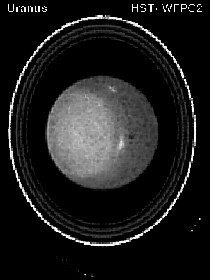This image, taken by Hubble, clearly shows Uranus and its rings.
Click on image for full size
Courtesy of NASA
Discover Uranus
Astronomer William Herschel is credited with the discovery of Uranus in 1781. He was using a telescope he built himself when he spotted a dim object. He watched it for years and determined it had to be a planet.
Herschel argued with other astronomers over the new planet's name. He wanted to name it after King George III of Great Britain while others wanted him to name it after himself. Finally, they chose to name it like the other planets-- after an ancient god. Uranus was named after Ouranos, one of the first gods in Greek mythology.
Most of what we know today about this distant planet came from the Voyager II flyby in 1986. Uranus is a very odd planet. It sits on its side with the north and south poles sticking out the sides.
Although Herschel discovered two of the planet's satellites, most of the rest were spotted by Voyager II. The total number of moons for Uranus is 21, the largest number for any planet in our solar system. With the help of more powerful telescopes, more moons may be revealed.
In 1977, scientists from Cornell University watched as Uranus appeared to blink several times. They later realized the blinking was caused by a band of rings surrounding the planet. These rings are very dark and narrow, unlike Saturn's, which are bright. Voyager II sent back many pictures that clearly show these rings.
You might also be interested in:
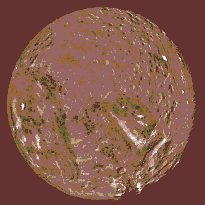
Uranus has // Call the moon count function defined in the document head print_moon_count('uranus'); fascinating moons and a complicated ring system. The ring is a completely different form of ring than
...more
Uranus, which was discovered by William Herschel in 1781, was unknown in ancient times. Astronomers continued the practice of naming planets after deities in Greek and Roman mythology and named this new
...more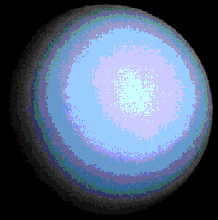
The plain aquamarine face of Uranus confirms the fact that Uranus is covered with clouds. The sameness of the planet's appearance shows that the planet's atmosphere is mostly composed of one thing, methane.
...more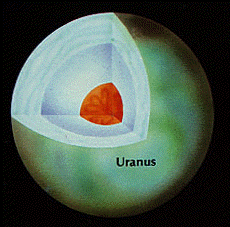
The Giant planets do not have the same layered structure that the earthlike planets do. Their evolution was quite different than that of the earthlike planets, and they have much more gas and ice inside.
...more
Uranus is the tilted planet. The axis through its North and South Poles is tilted by 98°. In other words, Uranus is lying on its side! That's not all - the magnetic field of Uranus is tilted, too. The
...more
The giant planets have definitely changed since their formation. But how much remains to be seen. Most of the original air of the giant planets remains in place. (The earth-like planets lost most of their
...more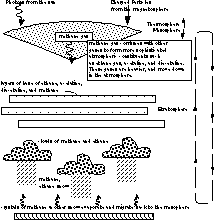
Uranus' atmosphere is made of methane, a medium sized molecule. At the uppermost reaches of the atmosphere, methane gas breaks apart due to energy from the sun and from the magnetosphere. The remins of
...more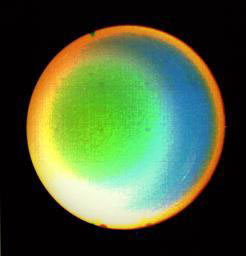
Motions of air in the atmosphere include wind. The major winds in the Uranian atmosphere are zonal winds, which have zones blowing west and belts flowing east. Motion of air in the atmosphere can also
...more


